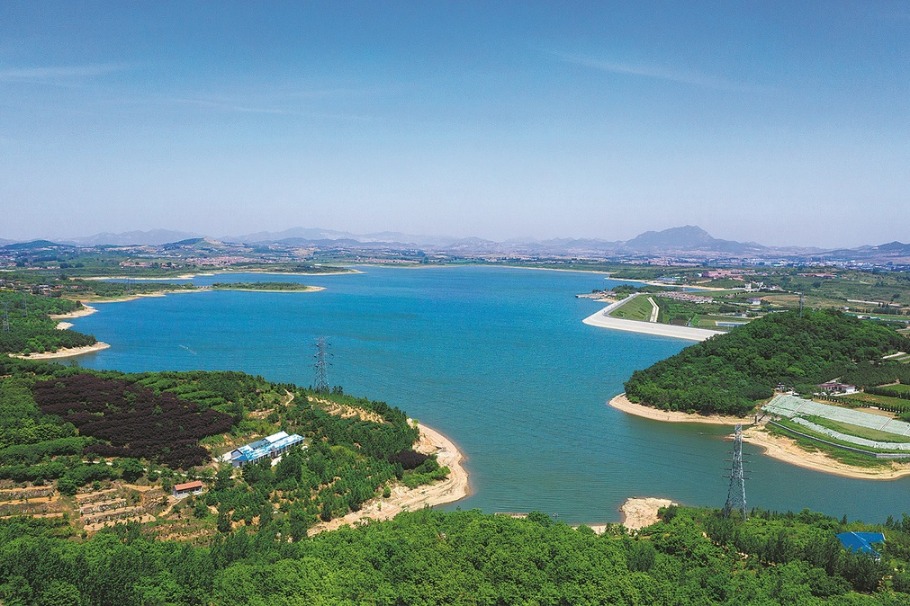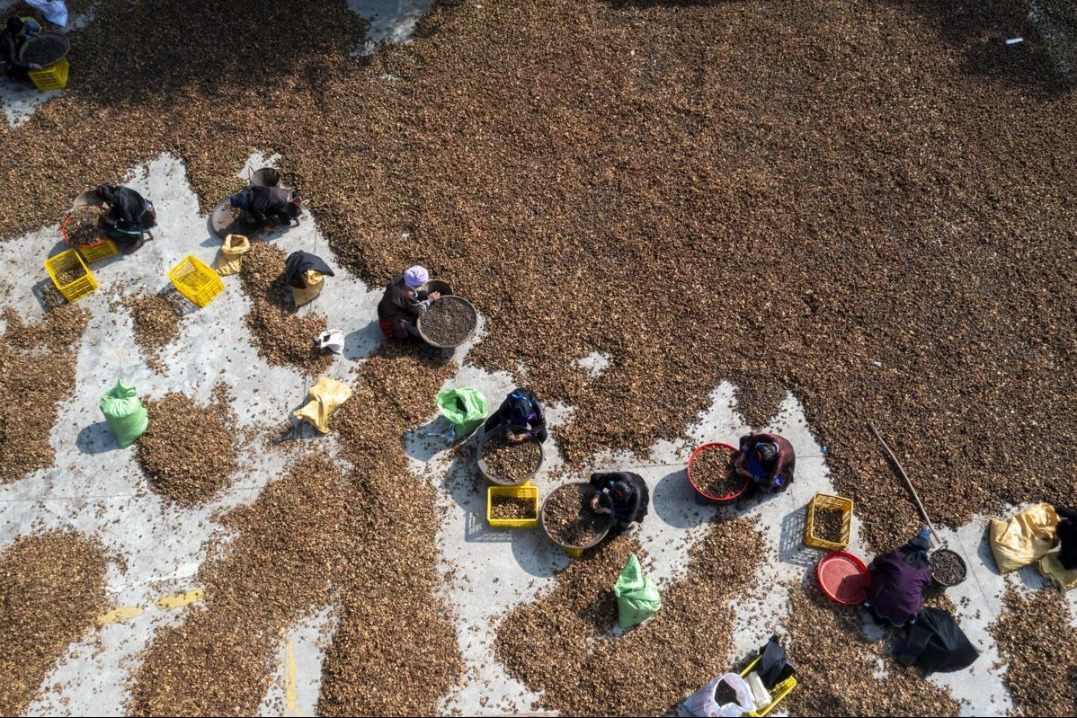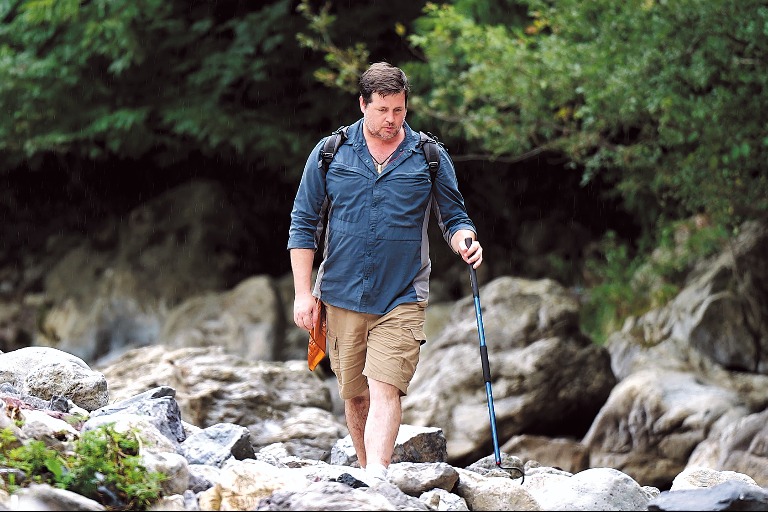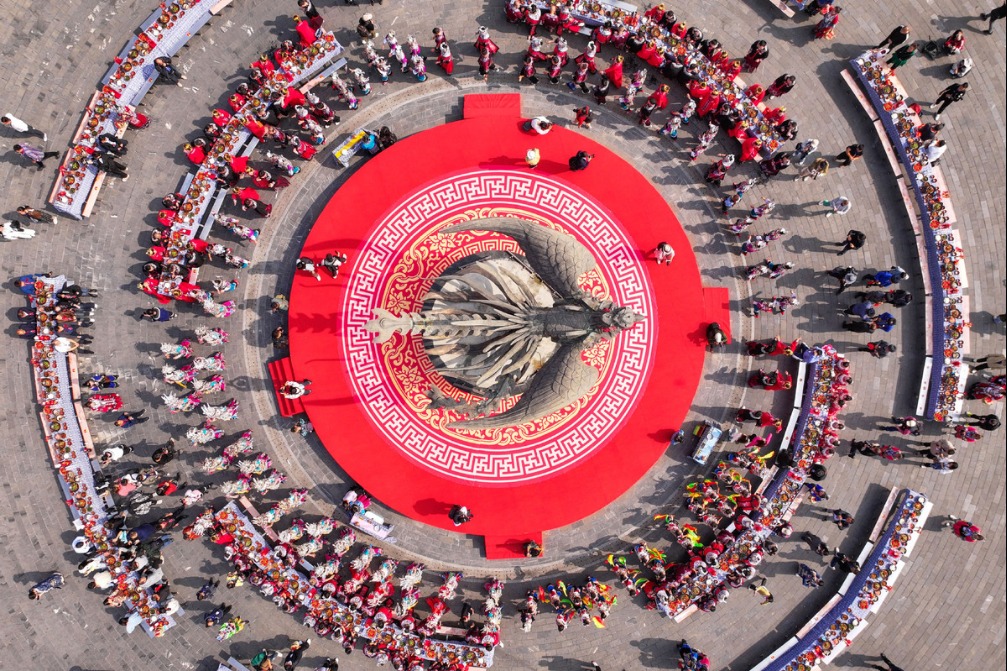Sustainable development mode addresses project funding shortages
Banks take pressure off authorities to pay for economic, green ventures






Editor's note: China Daily is publishing a series illustrating the country's efforts to achieve its carbon peaking and carbon neutrality goals.
The introduction of eco-environment-oriented development, otherwise known as EOD, has enabled governments at various levels to further their efforts at simultaneously pursuing economic growth and environmental protection by reducing the debt load on local authorities.
The development mode, first introduced in 2018, has helped to alleviate the financial burden on governments by extending credit lines from a range of banks for them to continue their pursuit of sustainable development without requiring direct investment from the government.
In October, an EOD project in the county-level city of Zhuanghe, administered by Dalian in Liaoning province, centered on improving the city's water quality and fishing industry, secured a 20-year credit line of 1.26 billion yuan ($176.8 million) from the Agricultural Development Bank of China.
This was the first EOD project in Liaoning province to receive bank financing, according to the Liaoning Department of Ecology and Environment.
"After completion, it will effectively improve the water quality of the Qingduizi Bay coastal waters, providing favorable environmental conditions for the construction of the nearby fishery economic zone," said Zhang Jixin, president of Dalian North Yellow Sea Industrial Development Group Co, the undertaker of the project.
The "Dalian Zhuanghe water environment comprehensive improvement and fishery economic zone construction EOD project" aims to achieve a mutually beneficial integration of industrial development and ecological environment governance, he added.
The project passed the review by the Ministry of Ecology and Environment in June last year and stands as the first marine ecological environmental governance EOD project in northern China.
A unique feature of the EOD development mode is that it integrates profitable business programs with environmental projects that yield limited economic returns. The profits from the businesses involved are reinvested in the environmental programs to strike a balance between development and conservation.
"By integrating social capital, special subsidies and policy-based finance, among other resources, the efficiency of project financing has been significantly enhanced," said Zong Jichuan, dean of the School of Finance at Dongbei University of Finance and Economics.
"It breaks away from the traditional development model of heavy financing and heavy debt issuance, shifting toward a market-oriented approach to regional comprehensive development. This approach not only protects the environment but also alleviates government financial pressures," he said.
The Ministry of Ecology and Environment has established cooperative relationships with financial institutions such as the China Development Bank, the Agricultural Development Bank of China and the National Green Development Fund to facilitate precise financial investment for this type of development.
Data from the ministry shows that as of last year, it had cumulatively submitted 229 EOD projects to financial institutions, with a total investment of 971.8 billion yuan and financing needs of 682.8 billion yuan. A total of 201.2 billion yuan has been credited.
With a total investment of 1.6 billion yuan, the EOD project in Zhuanghe includes four subprojects: the comprehensive management of riverine ecological environments; rural domestic sewage treatment; comprehensive treatment of livestock and poultry manure pollution; and the first-phase project of the Dalian North Yellow Sea Fishery Economic Zone.
"When designing the project, we tailored it to local conditions by integrating industry and environmental governance," said Li Baitao, deputy director of the Zhuanghe ecological environment bureau.
Since the project's inclusion in the national EOD database, the bureau coordinated with the Zhuanghe branch of the Agricultural Development Bank of China. Through in-depth communication and cooperation among the government institutions, local enterprises and the bank, efforts were made to advance the implementation of the project, Li said.
- 3 seriously injured in high school stampede in China's Xinjiang
- Zhejiang uses social capital for conservation
- Multiple students injured after car-ramming in Hunan
- Sustainable development mode addresses project funding shortages
- China defends climate fund role
- New Long March series rockets to debut soon
































